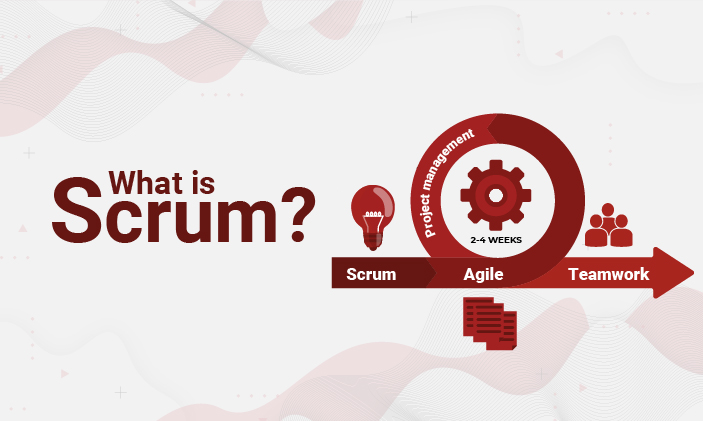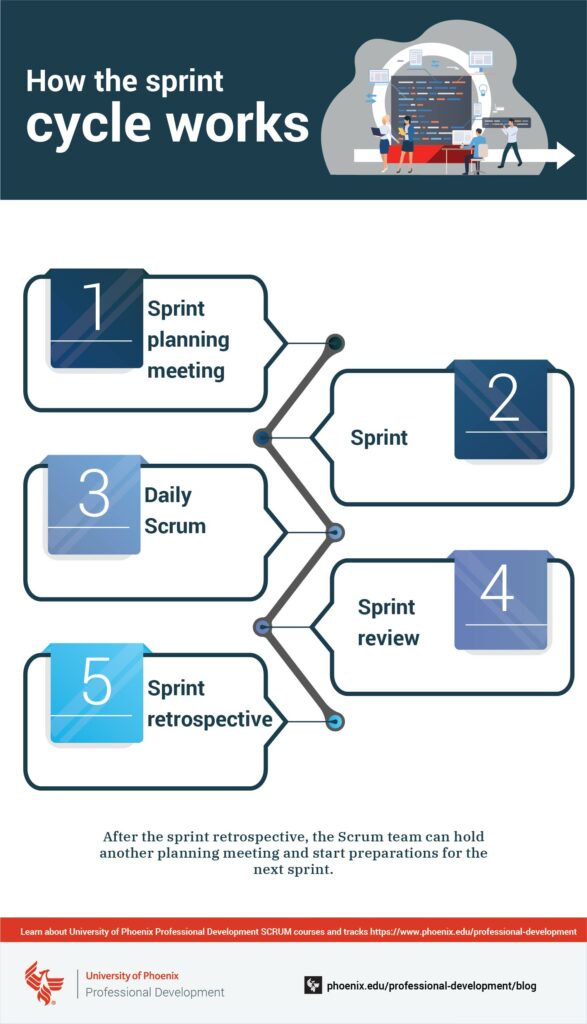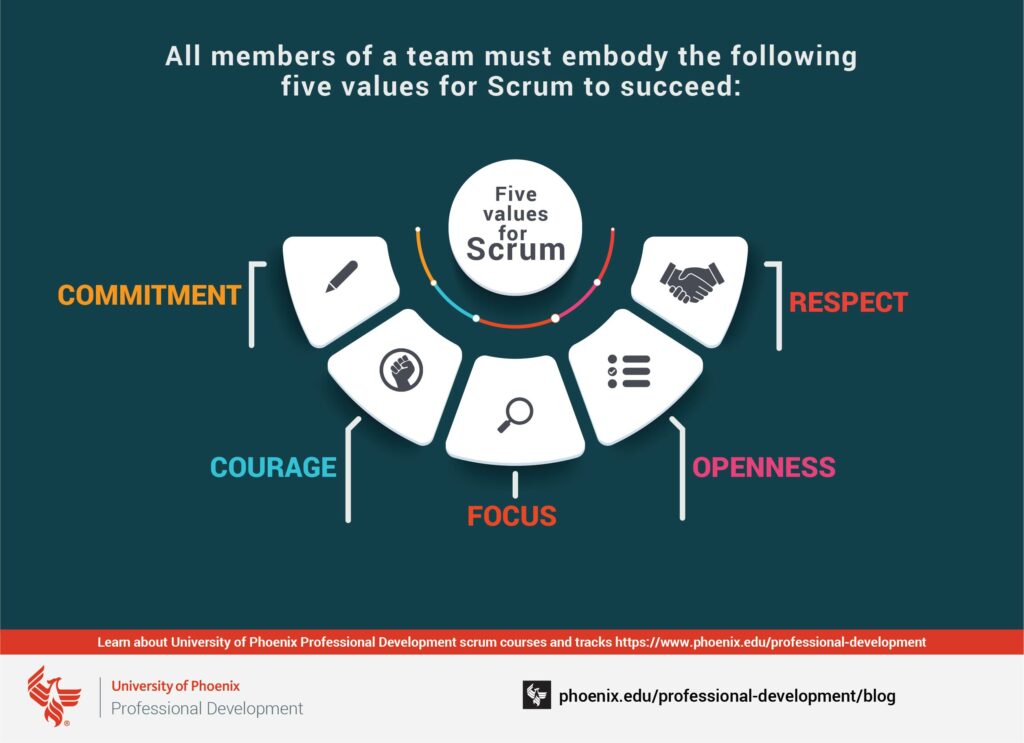Scrum is a project management framework designed to improve the process of creating, refining and delivering high-quality products to customers. It emphasizes teamwork, collaboration, problem-solving, communication, transparency and continual improvement among team members. Though it shares similarities with Kanban, scrum is a unique form of agile project planning.
Scrum gets its name from a rugby formation where players huddle closely together. Though Scrum has long been used in rugby, the term was not applied to product development until a 1986 article titled The New Product Development Game.
This article laid out the foundational ideas behind Scrum. Others were intrigued by this concept and employed it in their organizations, making changes that resulted in the framework commonly used today.
Though it was popularized in the context of software development, Scrum has spread to other industries. Many different kinds of organizations and teams now operate under the Scrum framework, including sales and marketing, education, financial services and government agencies. Even your organization can use and benefit from it, as long as you take the time to learn the fundamentals of Scrum first.

Scrum roles and responsibilities
The Scrum process involves several team members, each with a distinct role and associated responsibilities. The three primary roles on a Scrum team are:
Product owner
Scrum product owners focus on increasing the value of the product that the development team works on. They are often the leader of product development. To that end, they create the overall vision of the product, prioritize project needs and activities, and communicate with clients and stakeholders. They may take on tasks as needed, ranging from top-level strategy to hands-on development work.
This is a highly specialized and essential role when working in a Scrum framework.
If you are interested in this kind of role, you must first learn about Scrum as it pertains to product owners.
Scrum master
Scrum masters ensure that the team follows the Scrum methodology throughout the entire product development process. They may teach team members, lead daily meetings, minimize disruptions to work and provide feedback.
Before taking on this kind of work, you should learn the skills required to succeed as a Scrum master. That way, you will have the necessary knowledge to support both product owners and the development team.
Development team
Members of the development team work on creating the product in question. Teams are small enough to facilitate collaboration and effective communication, but large enough to handle every aspect of product development. The specific responsibilities of the team and its members will vary depending on what type of product they are developing and the tasks that must be performed to create it.
As a team member, you should be familiar with Scrum and how it works, but you may benefit more from developing or advancing skills relevant to your discipline. This may make an even better team member and empower you to do your best work.
Together, these three roles make up a full Scrum team. Each role is unique but essential. They all must work together for Scrum to be successful in any organization.
Scrum process overview
The Scrum framework is designed to accomplish higher-quality work more efficiently while allowing for exploration, collaboration and improvement. It is meant to be flexible, so Scrum teams can make changes to their product and process when necessary. Scrum also aims to help team members learn from their experiences working on the product, providing growth opportunities throughout the process.
Scrum revolves around the idea of a sprint. This is a fixed amount of time where a Scrum team completes a predetermined amount of work, often aiming to finish a particular deliverable or project.
As the name implies, sprints are not very long; they may last anywhere between a week and a month. Sprints are meant to be iterative. Once a sprint ends, Scrum teams begin the cycle again.
Generally, this is how the sprint cycle works:
- Sprint planning meeting: Before starting work, the team meets to plan their sprint. They decide upon a goal for the sprint, the work that must be done to meet that goal, and how long the sprint will last.
- Sprint: Once planning is complete, the sprint begins. Each team member works on their respective tasks meant to help meet their predetermined goal.
- Daily Scrum: During the sprint, the Scrum team has a short meeting each morning until the sprint is completed. This is called the daily Scrum or daily standup. At the daily Scrum, the team assesses their work from the previous workday, identifies new challenges or developments in their work, and goes over the work they plan to do that day.
- Sprint review: At the end of a sprint, the Scrum team shares their work with stakeholders. They may receive feedback on their work and guidance about what to work on in the next sprint.
- Sprint retrospective: Similarly, the Scrum team gathers to reflect on the previous sprint. They may go over what went well, what didn’t, and what they want to do differently in the next sprint.
After the sprint retrospective, the Scrum team can hold another planning meeting and start preparations for the next sprint.

Scrum artifacts
In Scrum, artifacts are the tools used to manage work during their sprints. They allow Scrum teams to stay updated on the work other members are doing and help everyone accomplish the goal of a given sprint. Each artifact is created by the Scrum team as they work through a project
The main Scrum artifacts include:
- Product backlog: This is a list of all the work that must be done to complete the project. The highest-priority tasks are at the top of the list, while less critical tasks are at the bottom. The product backlog ensures that everyone knows the state of the project, including remaining work or changing priorities. Typically, the product owner maintains the product backlog and makes updates as needed.
- Sprint backlog: The sprint backlog is a list of all the work that must be done by the end of the sprint. Tasks are taken from the product backlog, prioritized and assigned to members of the development team. Depending on the state of the project, tasks may be added to, removed from, or re-prioritized in the sprint backlog.
- Product increment: The product increment represents the output or end product of the most recent sprint. Traditionally, the product increment is “done” according to the Scrum team’s chosen definition of the word. Product increments should build upon each other until the team completes the project.
Though these are the three main Scrum artifacts, there are many ways you can use them within your team. Part of Scrum is flexibility, and that means being flexible with all parts of the process.
Values of Scrum

Scrum may provide an easy-to-follow framework for project management, but some values guide how that framework is implemented. All members of a team must embody the following five values for Scrum to succeed:
- Commitment: Each team member needs to be committed to each sprint until the project is complete. Team members rely on each other to do their work, and they must be able to trust that everyone else is just as committed to the sprint as they are.
- Courage: Each team member must have the courage to do the right thing throughout the project. This includes having the courage to be honest (such as asking for help, disagreeing with team members or acknowledging challenges), as well as to try something new or unconventional for the product.
- Focus: Each team member has to stay focused on the sprint backlog and the goals of the sprint. Because the sprint is fixed, Scrum teams only have that period to complete their work. If team members aren’t focused, that work won’t get done.
- Openness: Each team member should be open and transparent in their work. This includes sharing progress updates, acknowledging challenges and resolving issues with other team members or stakeholders. It also means being open to collaboration and problem-solving.
- Respect: Each team member must respect their colleagues. Respect can take many forms, but in Scrum, it often entails acknowledging the value of others, their experiences and their contributions. Additionally, this means having respect for the Scrum framework itself.
By sticking to these values, every member of a Scrum team can feel secure and do their best possible work throughout the project.
Scrum is one of many frameworks you can use to improve project management and product development in your organization. While its tenets are easy enough to understand and follow, Scrum can still prove challenging to implement. It’s valuable to learn all you can about Scrum. That way, you can customize this framework to meet the unique needs of your organization and ensure Scrum is successful for everyone on your team.
